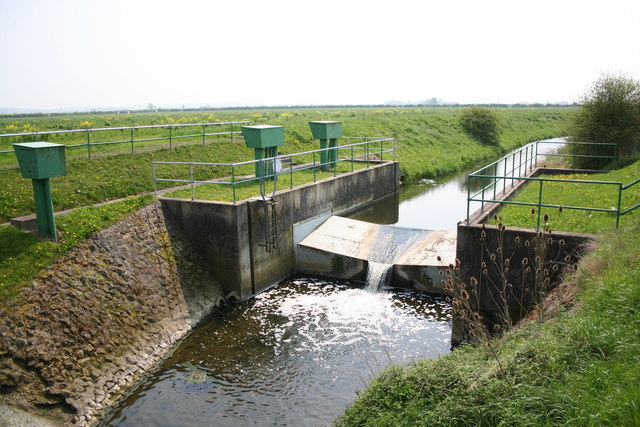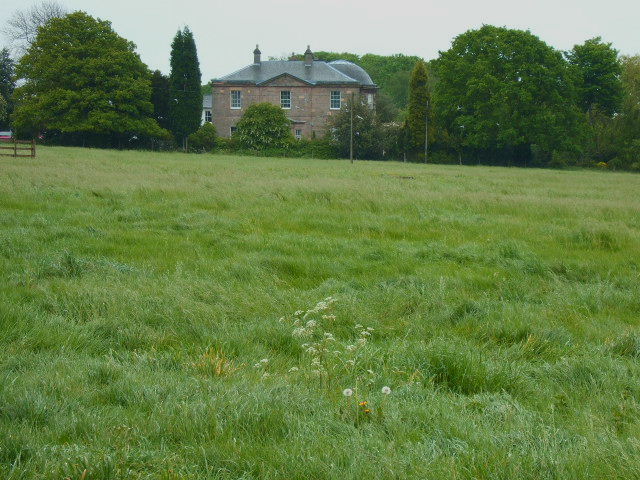|
River Anker
The River Anker is a river in England that flows through the centre of Nuneaton. It is a major tributary of the River Tame, which it joins in Tamworth. The name of the river derives from an old British term for ''winding river''. From source to river mouth at Tamworth is . Course The river rises near Wolvey and flows in a north-westerly direction to pass between Bramcote and Burton Hastings, it is designated a main river at Stretton Baskerville where it also forms the boundary between the boroughs of Rugby, Nuneaton and Bedworth. On the outskirts of Nuneaton it collects the Sketchley Brook, and then passes alongside the Liberty Way sports stadium. At this point the river splits, with a flood relief channel to the north, and the main channel passing through the Nuneaton town centre. The relief channel re-joins beyond the town at Weddington, where the river then continues in the same north-westerly direction to pass the village of Caldecote, then Mancetter (where it is cross ... [...More Info...] [...Related Items...] OR: [Wikipedia] [Google] [Baidu] |
England
England is a country that is part of the United Kingdom. It shares land borders with Wales to its west and Scotland to its north. The Irish Sea lies northwest and the Celtic Sea to the southwest. It is separated from continental Europe by the North Sea to the east and the English Channel to the south. The country covers five-eighths of the island of Great Britain, which lies in the North Atlantic, and includes over 100 smaller islands, such as the Isles of Scilly and the Isle of Wight. The area now called England was first inhabited by modern humans during the Upper Paleolithic period, but takes its name from the Angles, a Germanic tribe deriving its name from the Anglia peninsula, who settled during the 5th and 6th centuries. England became a unified state in the 10th century and has had a significant cultural and legal impact on the wider world since the Age of Discovery, which began during the 15th century. The English language, the Anglican Church, and Eng ... [...More Info...] [...Related Items...] OR: [Wikipedia] [Google] [Baidu] |
Witherley
Witherley is a village and civil parish in the Hinckley and Bosworth district of Leicestershire, England.OS Explorer Map 232 : Nuneaton & Tamworth: (1:25 000) : The civil parish of Witherley includes Atterton, Fenny Drayton, and Ratcliffe Culey as well as the village of Witherley itself. The population of the civil parish at the 2011 census was 1,373. Location Witherley is situated in the far west of Leicestershire. The Warwickshire-Leicestershire border runs parallel to the parish boundary, along the River Anker to the west and the A5 to the south. The village centre is less than 2 miles from the town of Atherstone and 1 mile from the village of Mancetter. Village features One of its significant features is the church of St Peter, noted for its tall steeple, ""/ 157.4 ft. The village school, Witherley Church of England Primary School, is located next to the church. Usually, children attending the school will transfer to Market Bosworth School Market is a term ... [...More Info...] [...Related Items...] OR: [Wikipedia] [Google] [Baidu] |
Charnwood Forest
Charnwood Forest is a hilly tract in north-western Leicestershire, England, bounded by Leicester, Loughborough and Coalville. The area is undulating, rocky and picturesque, with barren areas. It also has some extensive tracts of woodland; its elevation is generally and upwards, the area exceeding this height being about . The highest point, Bardon Hill, is . On its western flank lies an abandoned coalfield, with Coalville and other former mining villages, now being regenerated and replanted as part of the National Forest. The M1 motorway, between junctions 22 and 23, cuts through Charnwood Forest. The hard stone of Charnwood Forest has been quarried for centuries, and was a source of whetstones and quern-stones. The granite quarries at Bardon Hill, Buddon Hill and Whitwick supply crushed aggregate to a wide area of southern Britain. The forest is an important recreational area with woodland walks, noted for their displays of bluebells in the early spring, rock climbing ... [...More Info...] [...Related Items...] OR: [Wikipedia] [Google] [Baidu] |
Bardon Hill
Bardon Hill is the highest Hill in Leicestershire and on a clear day the Malvern and Shropshire Hills (approx. 50–60 miles), summits in Derbyshire (approx. 30–40 miles) and Lincoln Cathedral (almost 50 miles away) can be seen. However, the Sugar Loaf in South Wales, sometimes cited as visible from Bardon, cannot be seen, being over away. Near the top of the hill are two radio masts; the smaller of the two was built for the BBC as a link for Outside broadcast linking into the Sutton Coldfield Transmitter. This was then moved to the now larger mast which was originally built by an electricity supply company, it is now owned by Cellnex after Arqiva sold its UK wireless business in October 2019 and provides the NOW Leicester DAB radio service. The landscape was already attracting visitors before John Curtis wrote in the 1830s: he suggests that the view extends to over or one-twelfth of England and Wales. Potter also notes of the view from Bardon Hill that ''"it pr ... [...More Info...] [...Related Items...] OR: [Wikipedia] [Google] [Baidu] |
Catchment
A drainage basin is an area of land where all flowing surface water converges to a single point, such as a river mouth, or flows into another body of water, such as a lake or ocean. A basin is separated from adjacent basins by a perimeter, the ''drainage divide'', made up of a succession of elevated features, such as ridges and hills. A basin may consist of smaller basins that merge at river confluences, forming a hierarchical pattern. Other terms for a drainage basin are catchment area, catchment basin, drainage area, river basin, water basin, and impluvium. In North America, they are commonly called a watershed, though in other English-speaking places, "watershed" is used only in its original sense, that of a drainage divide. In a closed drainage basin, or endorheic basin, the water converges to a single point inside the basin, known as a sink, which may be a permanent lake, a dry lake, or a point where surface water is lost underground. Drainage basins are similar but ... [...More Info...] [...Related Items...] OR: [Wikipedia] [Google] [Baidu] |
Gauging Station
A stream gauge, streamgage or stream gauging station is a location used by hydrologists or environmental scientists to monitor and test terrestrial bodies of water. Hydrometric measurements of water level surface elevation (" stage") and/or volumetric discharge (flow) are generally taken and observations of biota and water quality may also be made. The locations of gauging stations are often found on topographical maps. Some gauging stations are highly automated and may include telemetry capability transmitted to a central data logging facility. Measurement equipment Automated direct measurement of streamflow discharge is difficult at present. In place of the direct measurement of streamflow discharge, one or more surrogate measurements can be used to produce discharge values. In the majority of cases, a stage (the elevation of the water surface) measurement is used as the surrogate. Low gradient (or shallow-sloped) streams are highly influenced by variable downstream ... [...More Info...] [...Related Items...] OR: [Wikipedia] [Google] [Baidu] |
Streamflow
Streamflow, or channel runoff, is the flow of water in streams and other channels, and is a major element of the water cycle. It is one component of the movement of water from the land to waterbodies, the other component being surface runoff. Water flowing in channels comes from surface runoff from adjacent hillslopes, from groundwater flow out of the ground, and from water discharged from pipes. The discharge of water flowing in a channel is measured using stream gauges or can be estimated by the Manning equation. The record of flow over time is called a hydrograph. Flooding occurs when the volume of water exceeds the capacity of the channel. Role in the water cycle Streams play a critical role in the hydrologic cycle that is essential for all life on Earth. A diversity of biological species, from unicellular organisms to vertebrates, depend on flowing-water systems for their habitat and food resources. Rivers are major aquatic landscapes for all manners of plants and anima ... [...More Info...] [...Related Items...] OR: [Wikipedia] [Google] [Baidu] |
European Chub
''Squalius cephalus'' is a European species of freshwater fish in the carp family Cyprinidae. It frequents both slow and moderate rivers, as well as canals and still waters of various kinds. This species is referred to as the common chub, European chub, or simply chub. Description It is a stocky fish with a large rounded head. Its body is long and cylindrical in shape and is covered in large greenish-brown scales which are edged with narrow bands of black across the back, paling to golden on the flanks and even paler on the belly. The tail is dark brown or black, the dorsal fin is a greyish-green in colour and all the other fins are orange-red. The dorsal fin has 3 spines and 7-9 soft rays while the anal fin has 3 spines and 7-10 rays. The vertebrae count is 42-48. It can grow to 60 cm standard length but most fish are around 30 cm. Distribution The chub is distributed throughout most of northern Eurasia, it can be found in the rivers flowing into the North, Baltic, ... [...More Info...] [...Related Items...] OR: [Wikipedia] [Google] [Baidu] |
Northern Pike
The northern pike (''Esox lucius'') is a species of carnivorous fish of the genus ''Esox'' (the pikes). They are typical of brackish water, brackish and fresh waters of the Northern Hemisphere (''i.e.'' holarctic in distribution). They are known simply as a pike in Great Britain, Britain, Ireland, and most of Eastern Europe, Canada and the United States. Pike can grow to a relatively large size: the average length is about , with maximum recorded lengths of up to and published weights of . The International Game Fish Association, IGFA currently recognizes a pike caught by Lothar Louis on Greffern Lake, Germany, on 16 October 1986, as the all-tackle world-record northern pike. Northern pike grow to larger sizes in Eurasia than in North America, and typically grow to larger sizes in coastal than inland regions of Eurasia. Etymology The northern pike gets its common name from its resemblance to the pole-weapon known as the Pike (weapon), pike (from the Middle English for 'point ... [...More Info...] [...Related Items...] OR: [Wikipedia] [Google] [Baidu] |
Tamworth Castle
Tamworth Castle, a Grade I listed building, is a Norman castle overlooking the mouth of the River Anker into the Tame in the town of Tamworth in Staffordshire, England. Before boundary changes in 1889, however, the castle was within the edge of Warwickshire while most of the town belonged to Staffordshire. The site served as a residence of the Mercian kings in Anglo Saxon times, but fell into disuse during the Viking invasions. Refortified by the Normans and later enlarged, the building is today one of the best preserved motte-and-bailey castles in England. History When Tamworth became the chief residence of Offa, ruler of the expanding Mercian kingdom, he built a palace there from which various charters were issued ''sedens in palatio regali in Tamoworthige'', the first dating from 781. Little trace of its former glory survived the Viking attack in 874 that left the town "for nearly forty years a mass of blackened ruins". Then in 913 Tamworth was rebuilt by Æthelflæd, La ... [...More Info...] [...Related Items...] OR: [Wikipedia] [Google] [Baidu] |
Amington Hall
Amington Hall is an early-19th-century former country house at Amington, near Tamworth, Staffordshire which has been converted into residential apartments. History The manor of Amington was anciently owned by the Clinton family. In 1422 William Repington purchased some of land from the Clintons and in 1539 his descendant Francis purchased the manor and remaining land. The Repingtons replaced the ancient manor house early in the 18th century. This house, later a farmhouse, and now known as Amington Old Hall farmhouse, still stands and is a Grade II listed building. The Repingtons prospered. In 1617 they acquired the neighbouring manor of Atherstone where they built a new Atherstone Hall. At Amington they had a new house designed by Samuel Wyatt and built in about 1810 close to the old manor. It is a Grade II* listed building. The two-storey building has an entrance front of three bays, the central bay pedimented and with a Tuscan porch. The unusual garden front has seven ba ... [...More Info...] [...Related Items...] OR: [Wikipedia] [Google] [Baidu] |
Site Of Special Scientific Interest
A Site of Special Scientific Interest (SSSI) in Great Britain or an Area of Special Scientific Interest (ASSI) in the Isle of Man and Northern Ireland is a conservation designation denoting a protected area in the United Kingdom and Isle of Man. SSSI/ASSIs are the basic building block of site-based nature conservation legislation and most other legal nature/geological conservation designations in the United Kingdom are based upon them, including national nature reserves, Ramsar sites, Special Protection Areas, and Special Areas of Conservation. The acronym "SSSI" is often pronounced "triple-S I". Selection and conservation Sites notified for their biological interest are known as Biological SSSIs (or ASSIs), and those notified for geological or physiographic interest are Geological SSSIs (or ASSIs). Sites may be divided into management units, with some areas including units that are noted for both biological and geological interest. Biological Biological SSSI/A ... [...More Info...] [...Related Items...] OR: [Wikipedia] [Google] [Baidu] |







